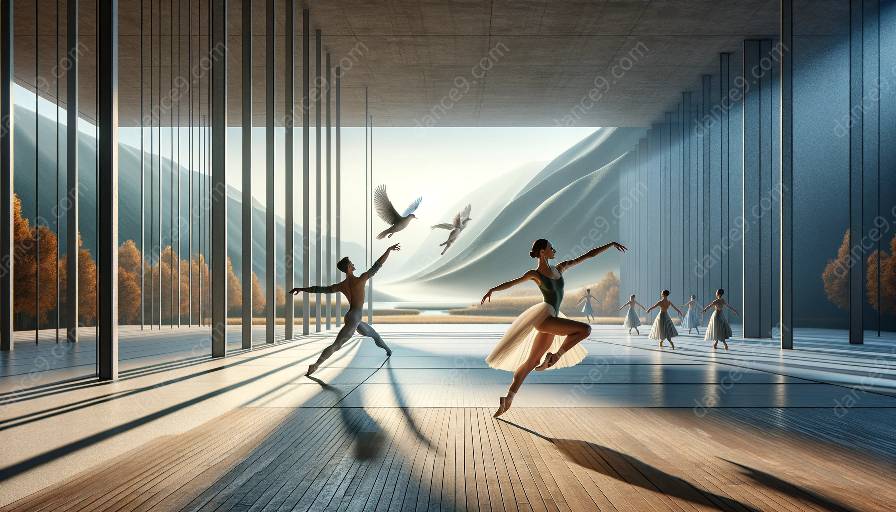Ballet, as an art form, has continuously evolved over the centuries, shaping and reshaping its techniques, movements, and styles. In the 20th century, the modern ballet movement made a significant impact on the art form, influencing defining productions and pushing the boundaries of traditional ballet.
Modern Ballet Movement in the 20th Century
The 20th century marked a period of immense change and innovation in the world of ballet. Influenced by socio-political movements, technological advancements, and a growing emphasis on individual expression, modern ballet emerged as a groundbreaking force. Iconic choreographers and dancers such as Martha Graham, Merce Cunningham, and George Balanchine challenged the conventions of classical ballet and introduced a new wave of creativity and experimentation.
Modern ballet movement in the 20th century sought to break away from the rigid structures of classical ballet, embracing a more fluid and expressive style. It incorporated elements of modern dance, including natural movements, asymmetry, and a heightened emotional resonance. This transformative period redefined the possibilities of movement and storytelling in ballet, leading to a rich tapestry of productions that continue to inspire and captivate audiences.
Defining Productions
The defining productions in modern ballet exemplify the spirit of innovation and creativity that characterized the 20th century. These seminal works pushed the boundaries of traditional ballet, offering new narratives, themes, and choreographic techniques that reflected the changing world around them.
1. 'The Rite of Spring' - Igor Stravinsky and Vaslav Nijinsky
'The Rite of Spring,' originally premiered in 1913, caused a sensation with its avant-garde music, choreography, and thematic exploration. Choreographed by Vaslav Nijinsky and composed by Igor Stravinsky, this production challenged the notions of beauty and grace, featuring primitive movements and a raw, visceral energy that shocked audiences and critics alike.
2. 'Appalachian Spring' - Martha Graham
Martha Graham, known for her groundbreaking contributions to modern dance, also left an indelible mark on modern ballet. 'Appalachian Spring,' premiered in 1944, became a defining work in the modern ballet movement, seamlessly blending Graham's distinctive style with classical ballet techniques. The production's dynamic portrayal of American folk themes and the human condition solidified its place in the annals of modern ballet history.
3. 'Agon' - George Balanchine
George Balanchine, revered for his neoclassical approach to ballet, created 'Agon' in 1957, a seminal work that epitomized the fusion of modern ballet movement with classical precision. With its avant-garde score and innovative pas de deux, 'Agon' redefined the possibilities of dance, showcasing a stark, angular aesthetic that reflected the modernist ethos of the time.
4. 'In the Upper Room' - Twyla Tharp
Twyla Tharp, a visionary choreographer known for her eclectic style, reinvented modern ballet with 'In the Upper Room,' premiered in 1986. This electrifying production merged ballet with contemporary dance and showcased a dynamic interplay between classical and modern movements, setting a new standard for innovation and artistic daring in modern ballet.
Ballet History and Theory
The evolution of modern ballet productions is deeply intertwined with the broader history and theoretical underpinnings of ballet as an art form. By embracing new forms of expression, storytelling, and choreographic innovation, modern ballet has continually expanded the boundaries of what ballet can communicate and achieve.
Theoretical perspectives on modern ballet often emphasize the integration of diverse influences, including psychological, sociological, and cultural dimensions. Scholars and practitioners explore how modern ballet productions reflect the changing attitudes towards gender, identity, and the human experience, offering a multifaceted lens through which to analyze and appreciate the art form.
As modern ballet continues to evolve, contemporary choreographers and companies draw inspiration from the defining productions of the past while forging new paths that resonate with today's audiences. The interplay between tradition and innovation remains a central theme in contemporary ballet, ensuring that the art form continues to captivate, inspire, and provoke thought in the 21st century and beyond.





























